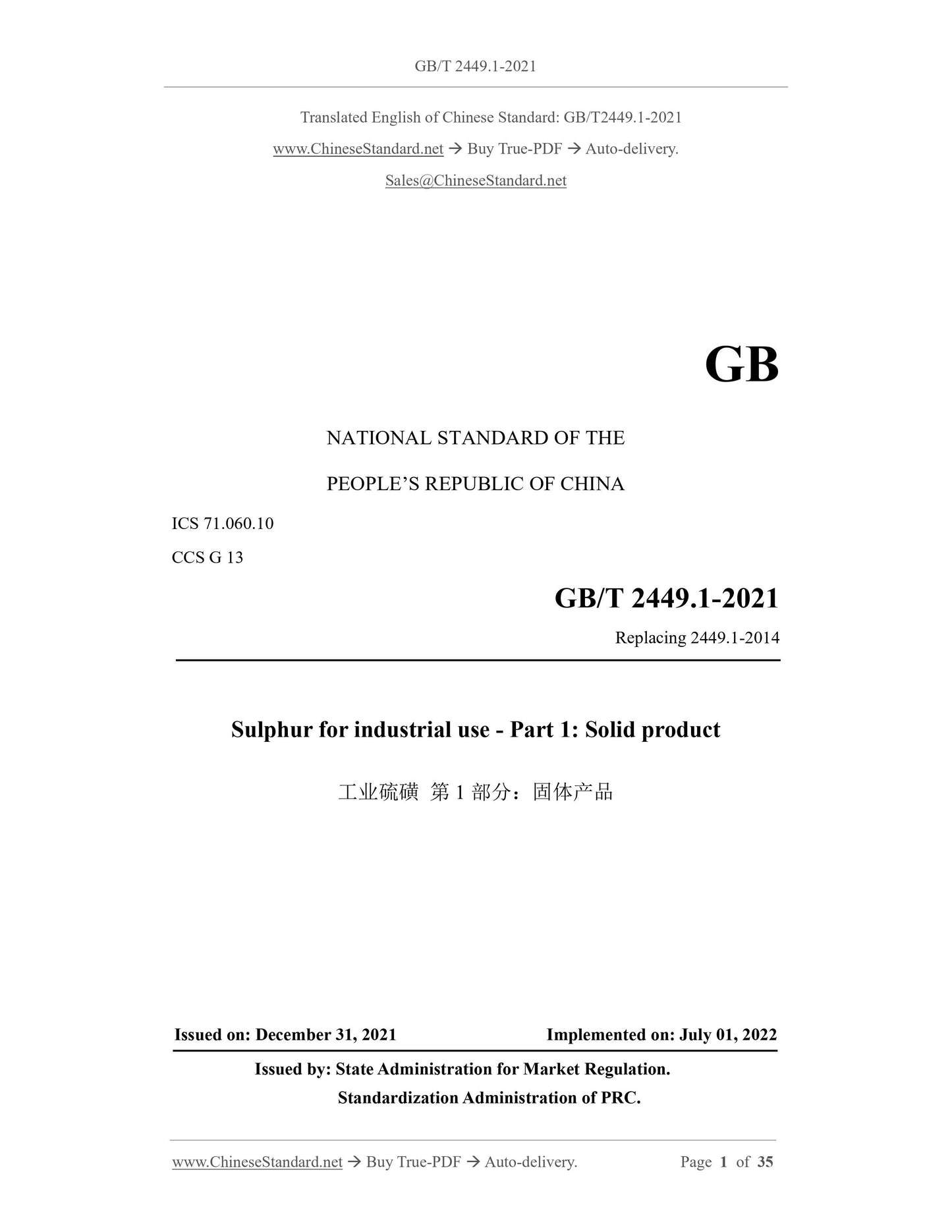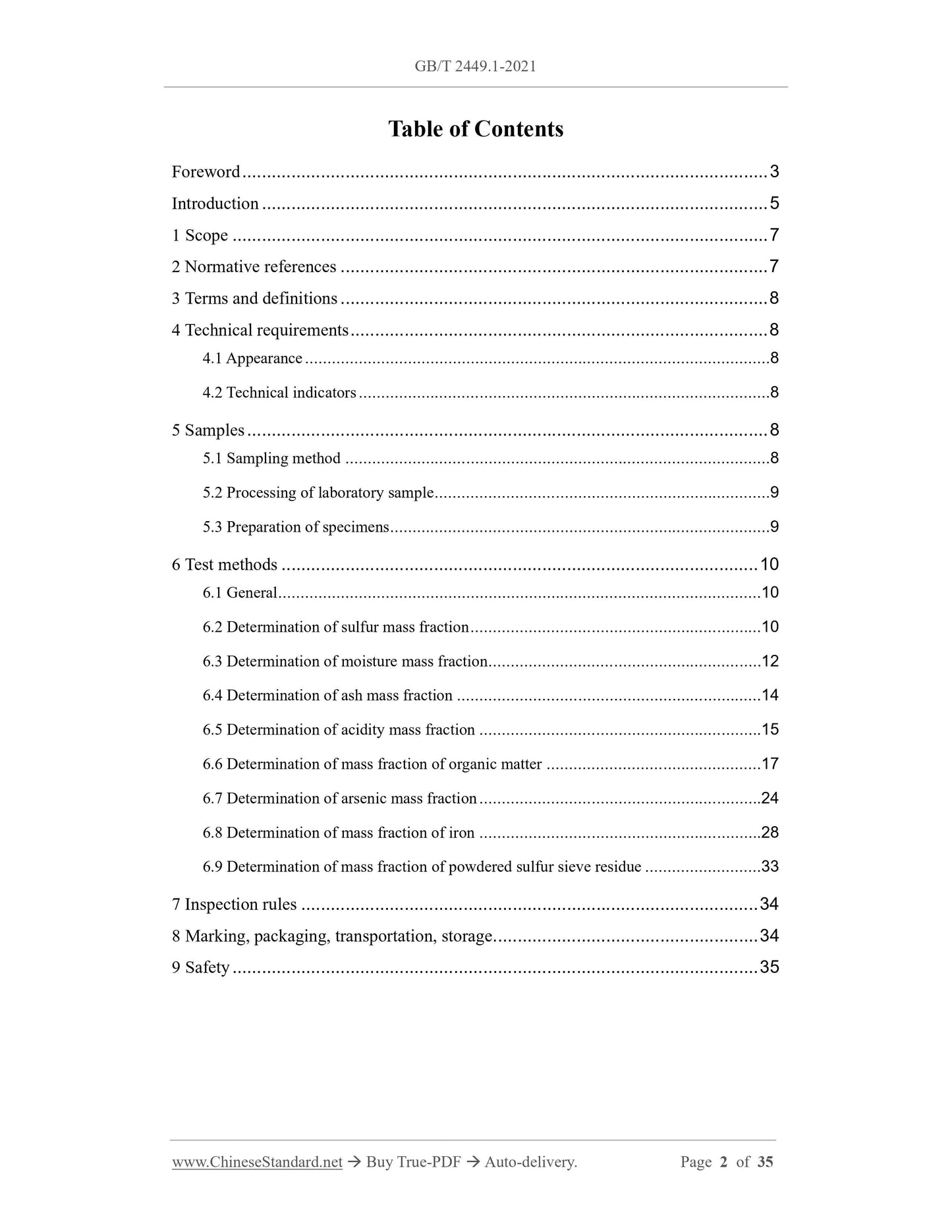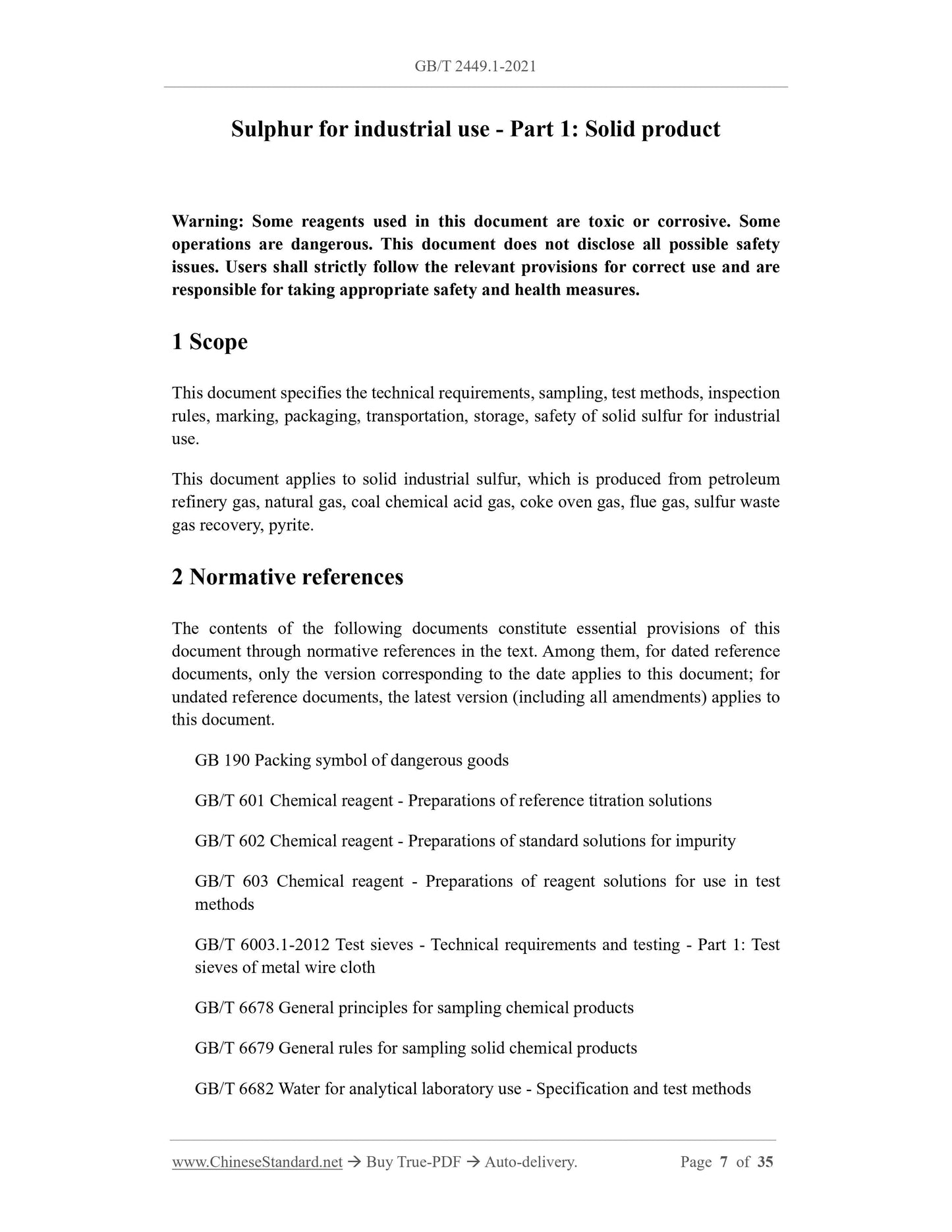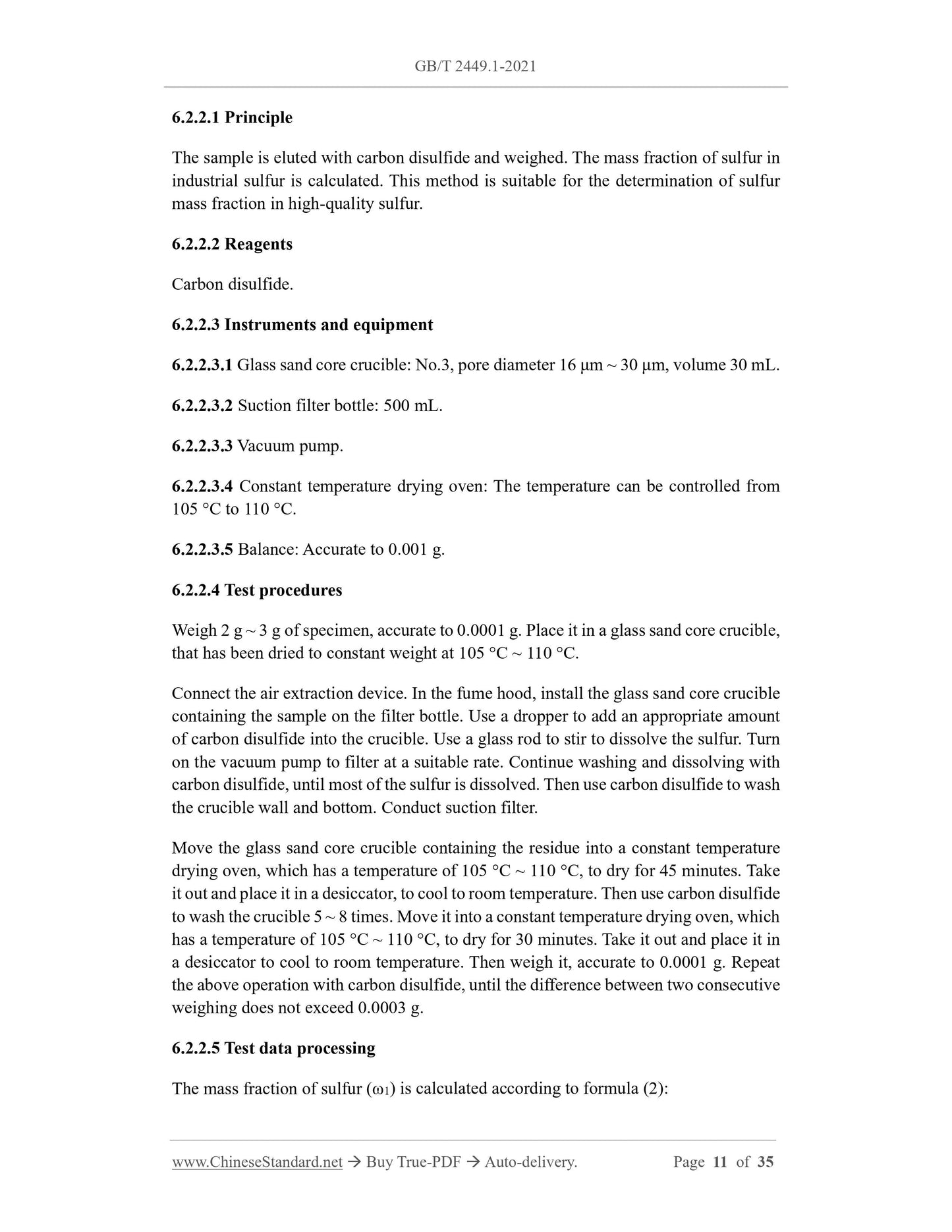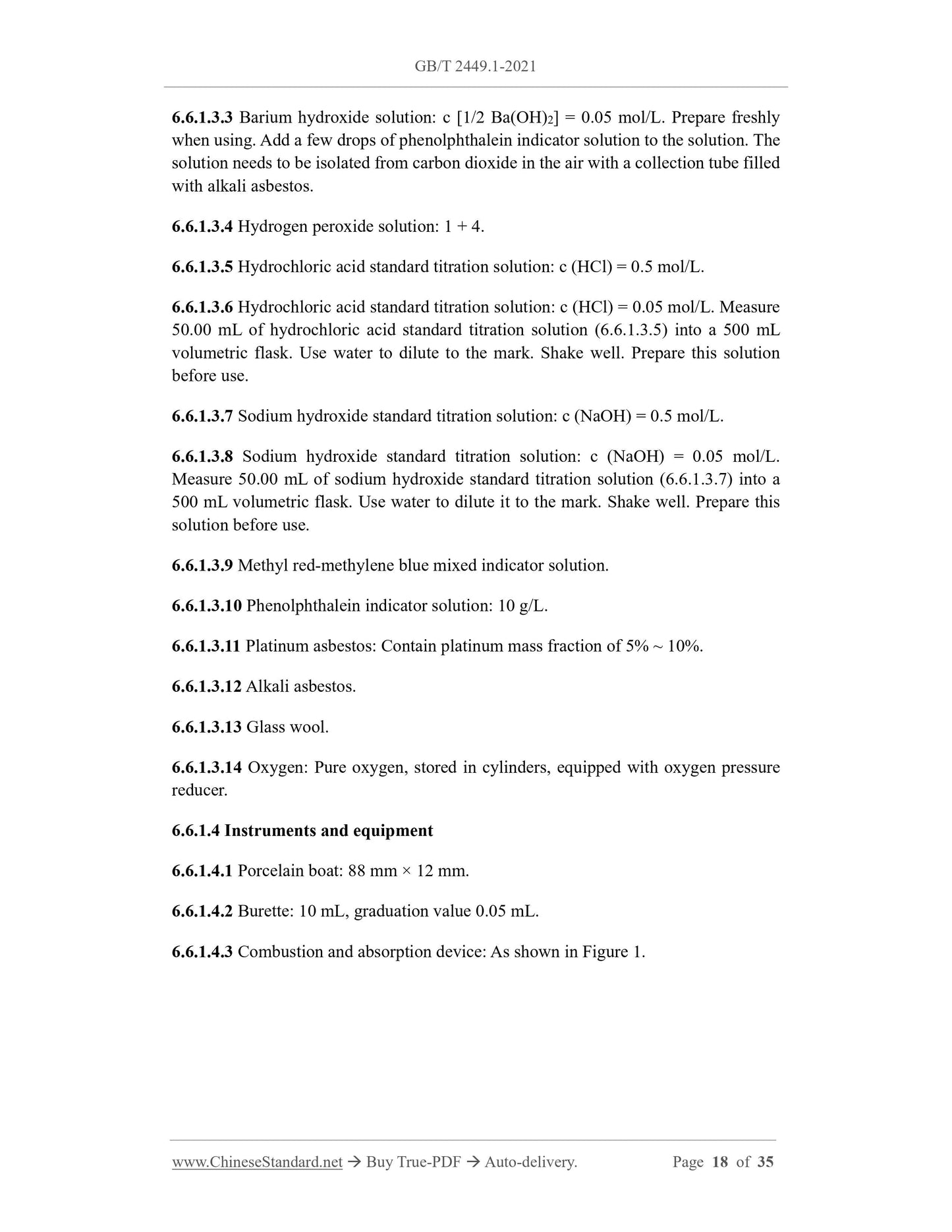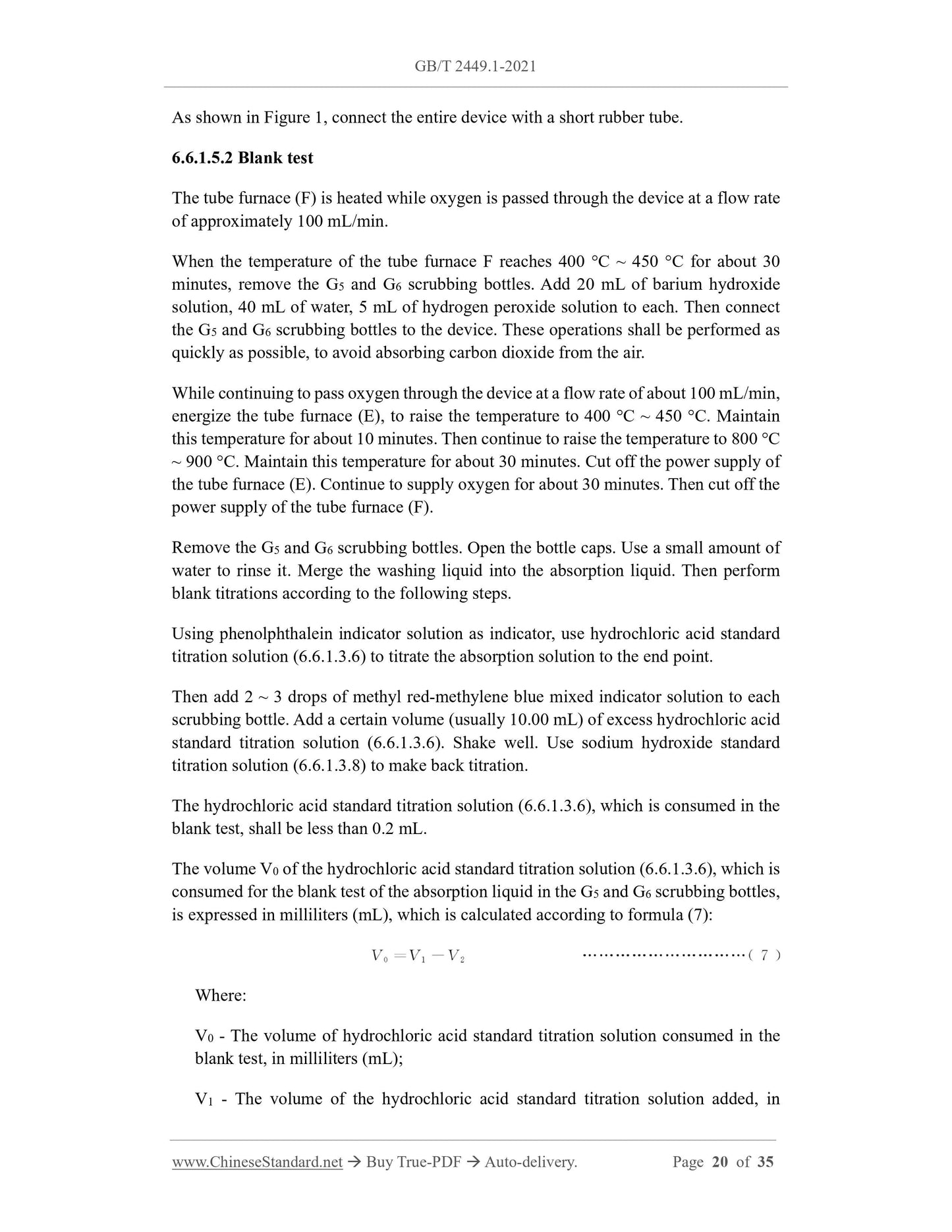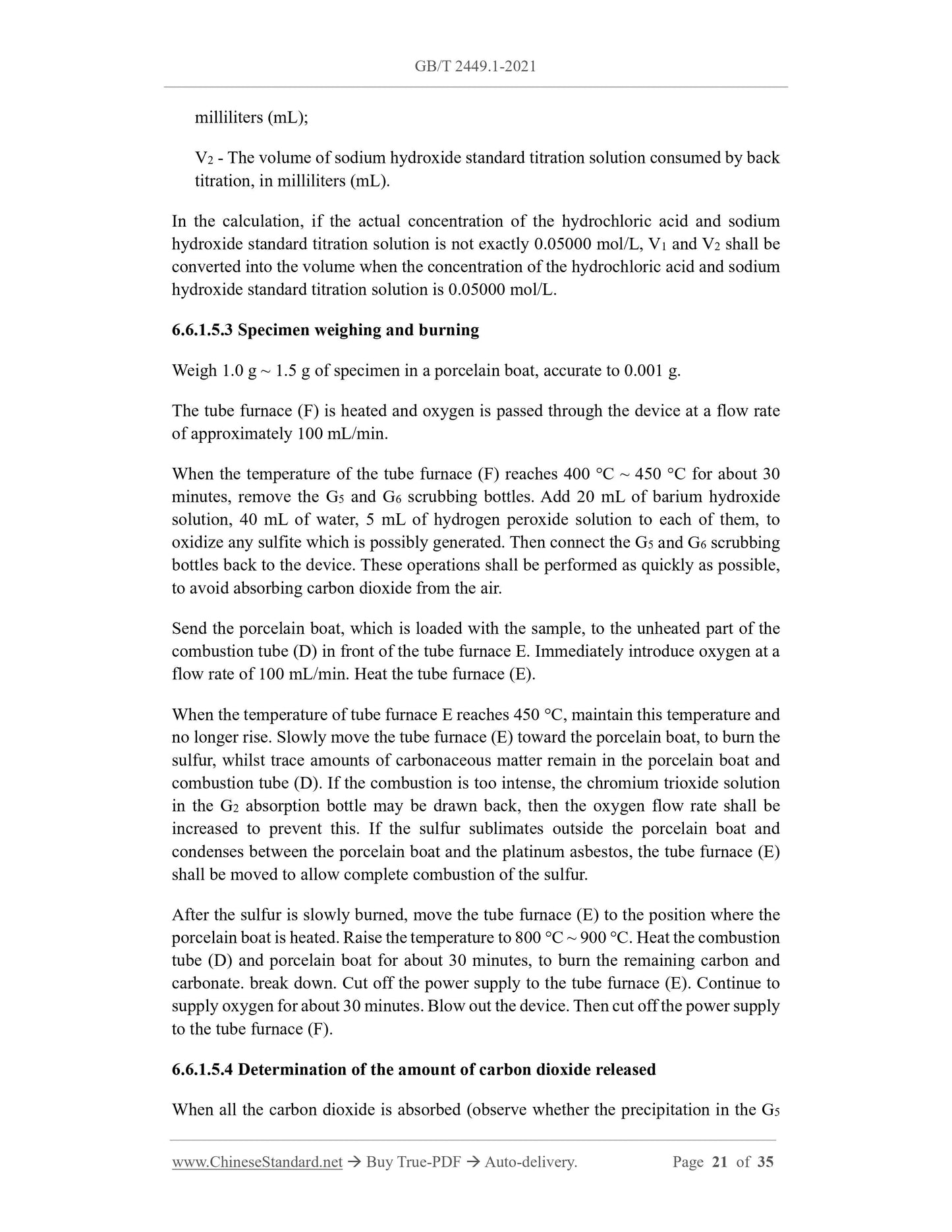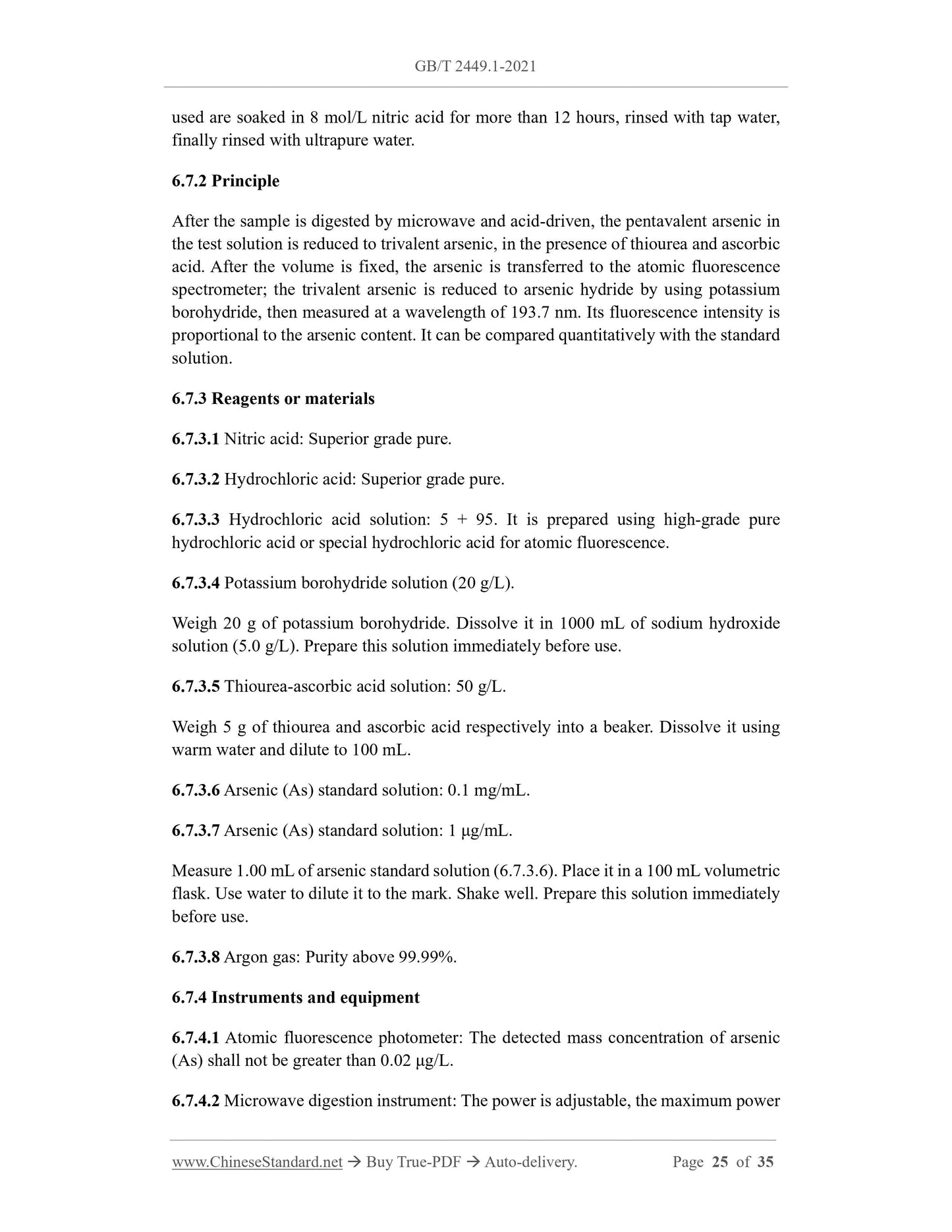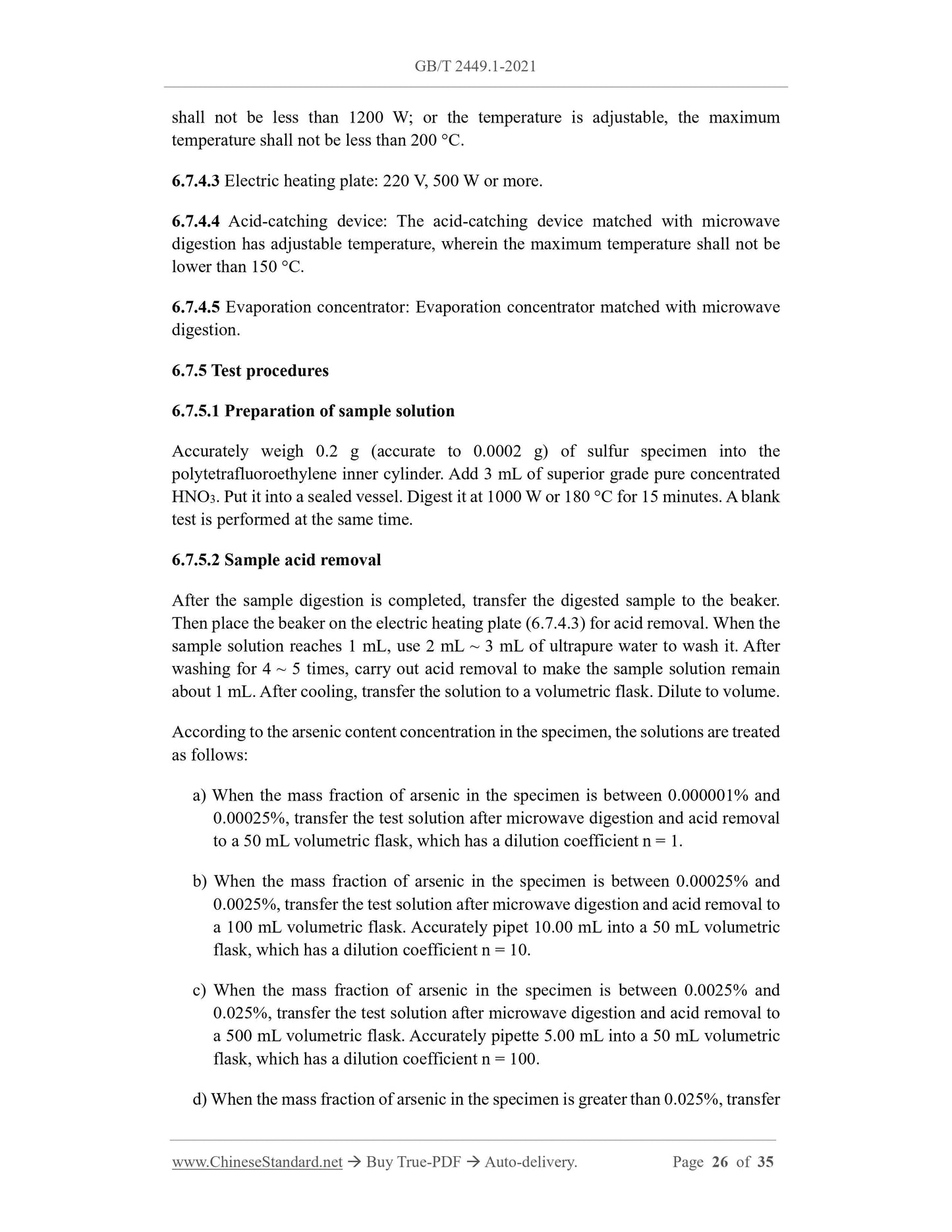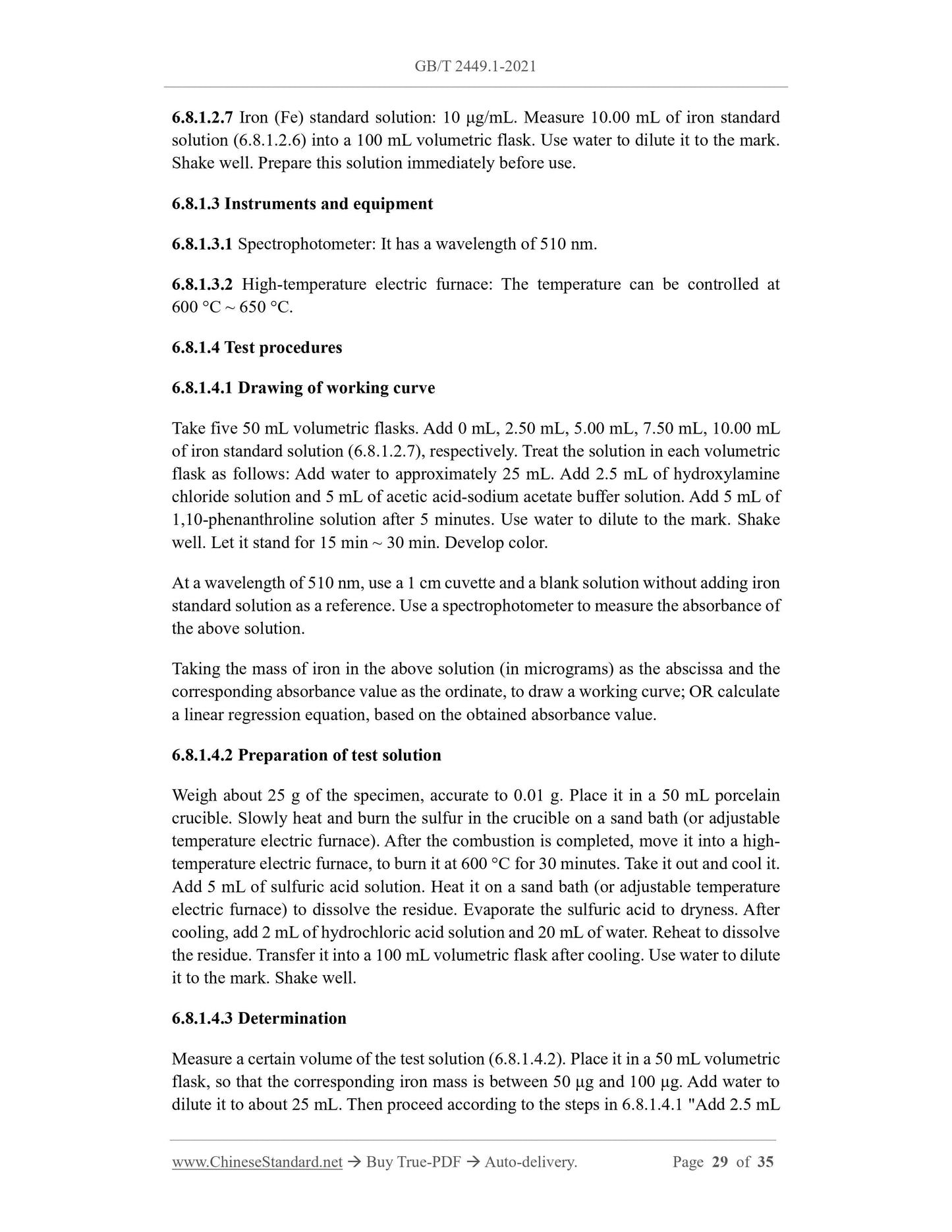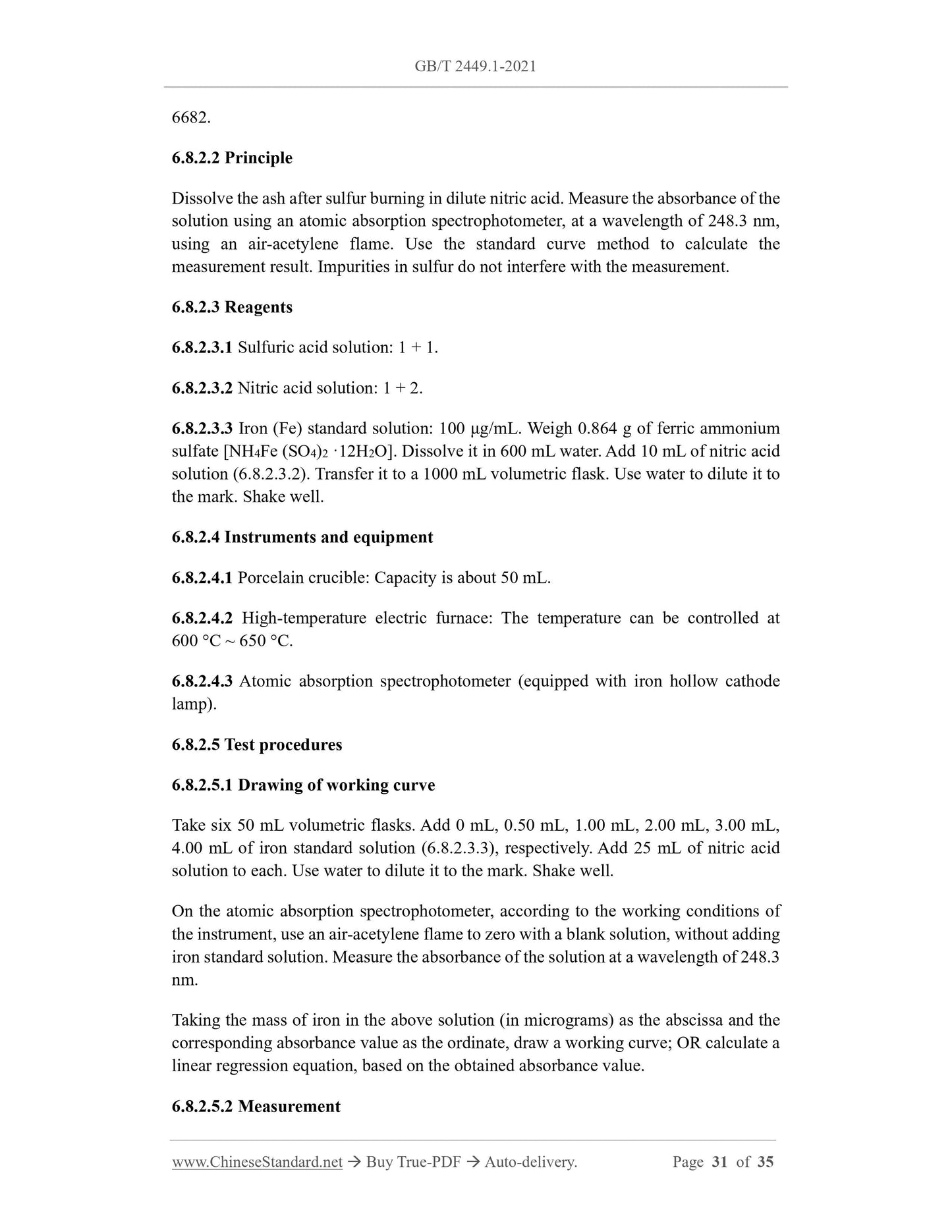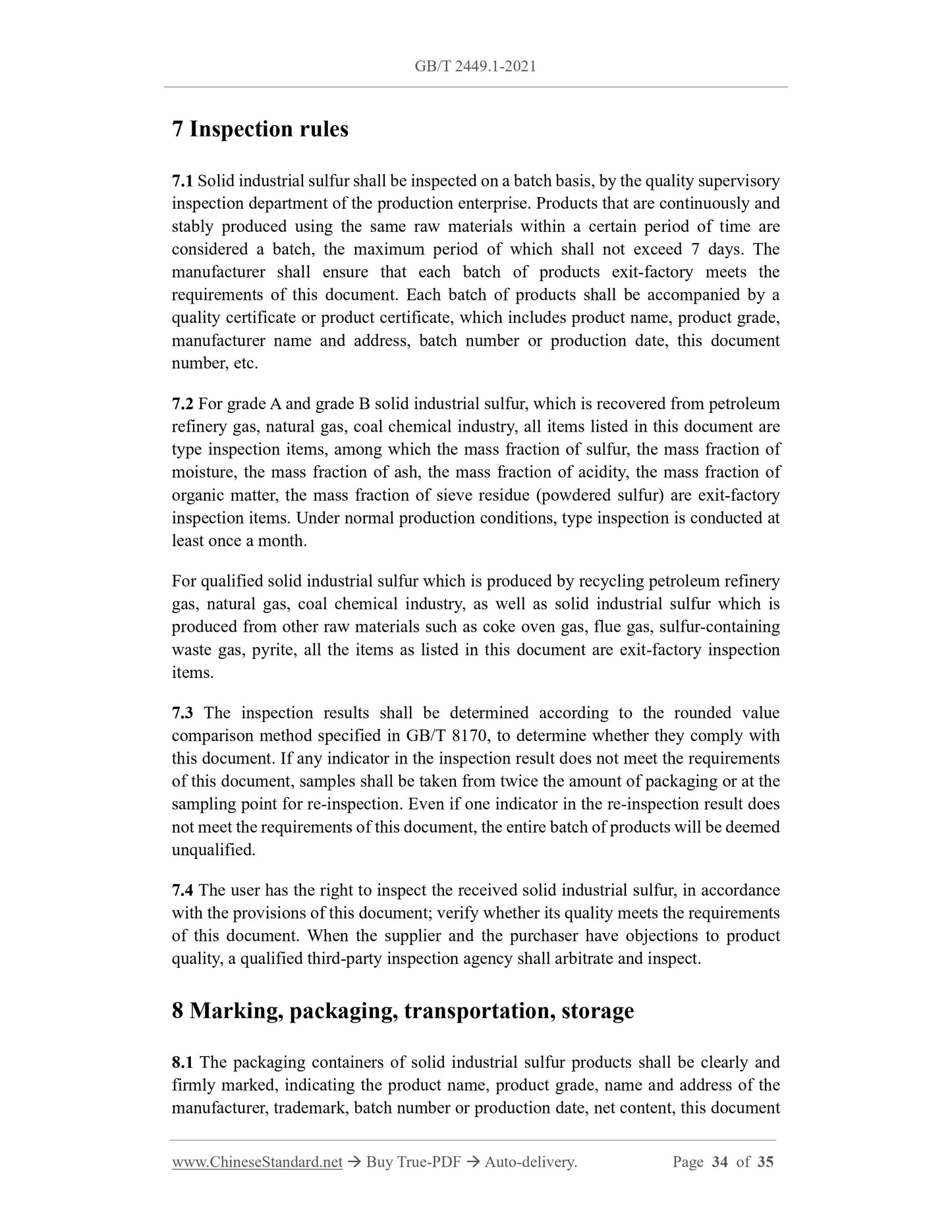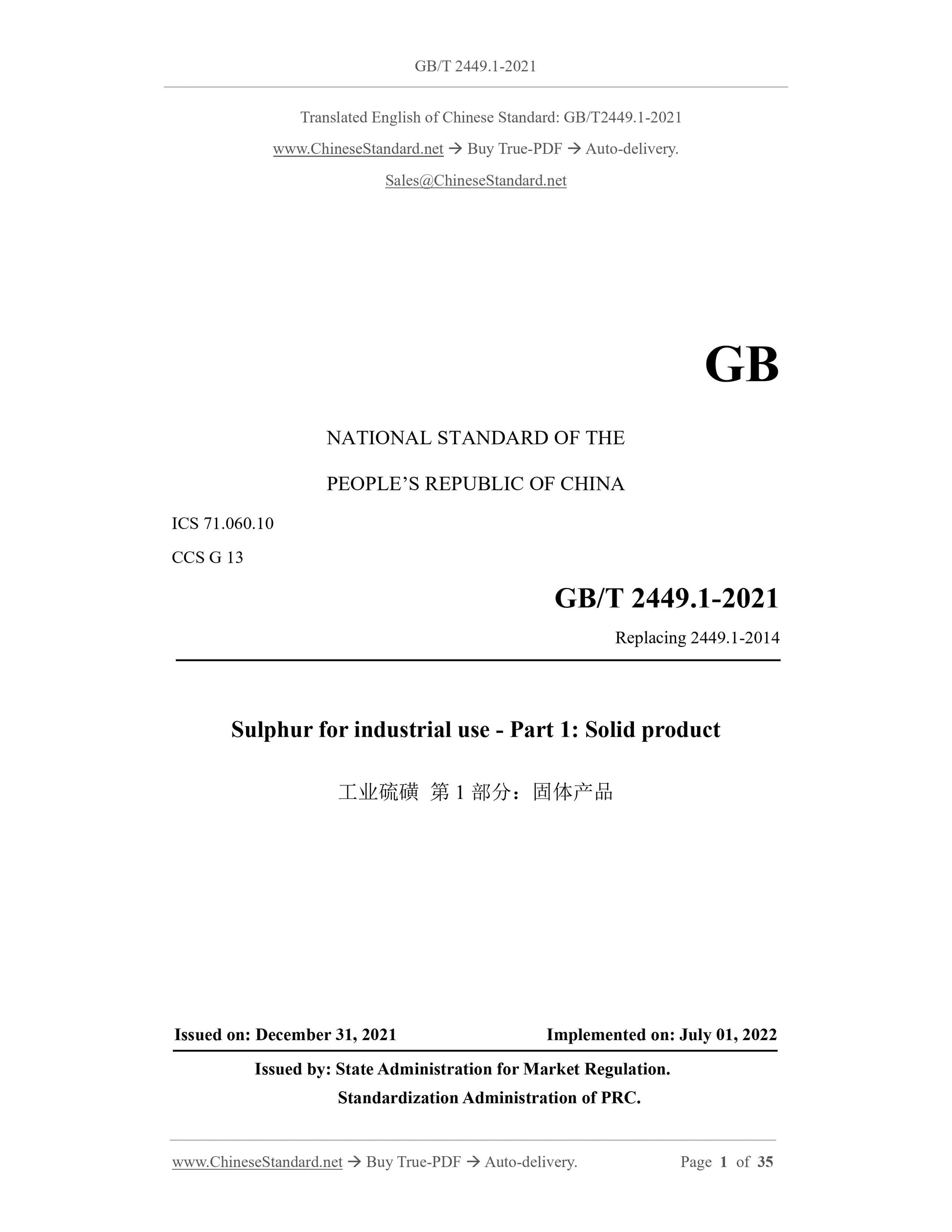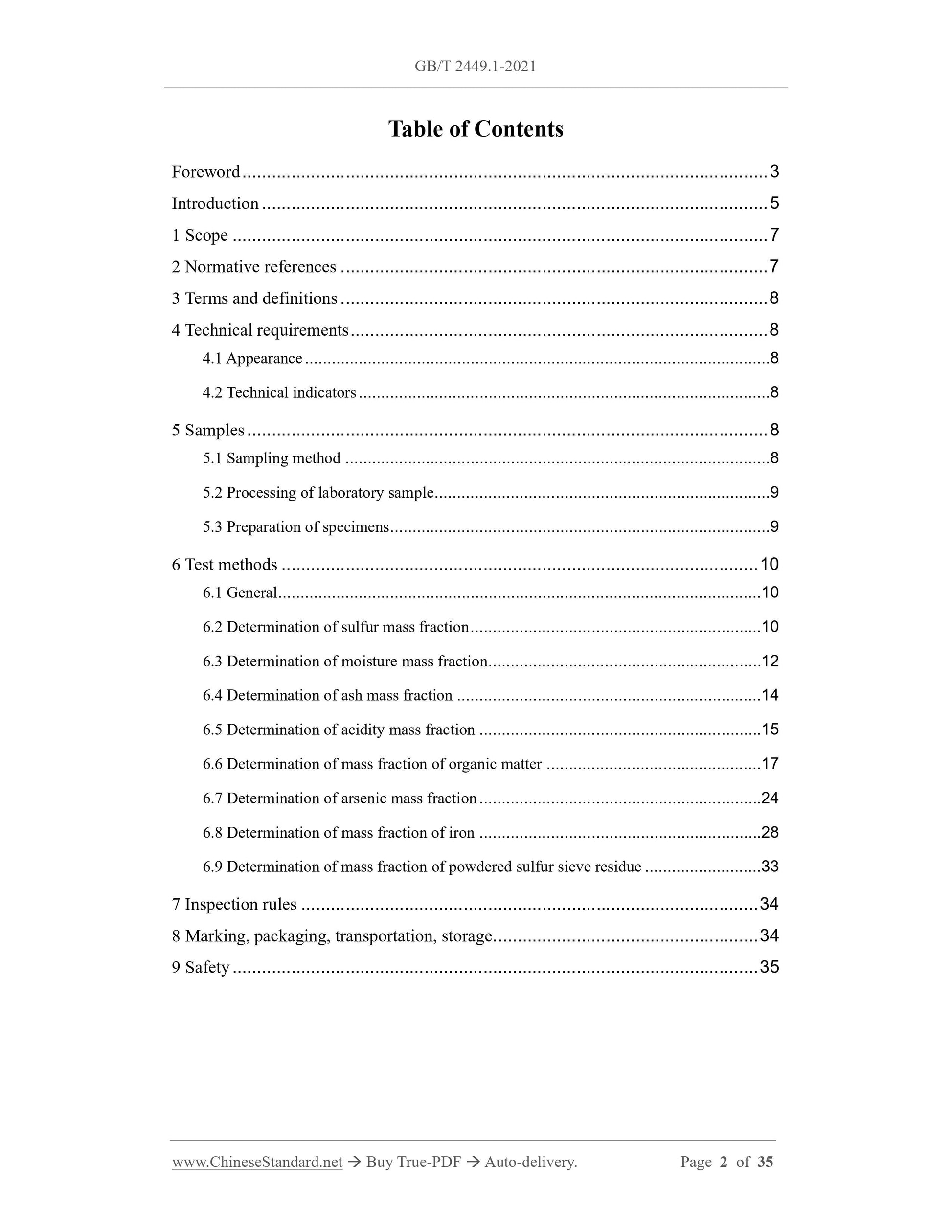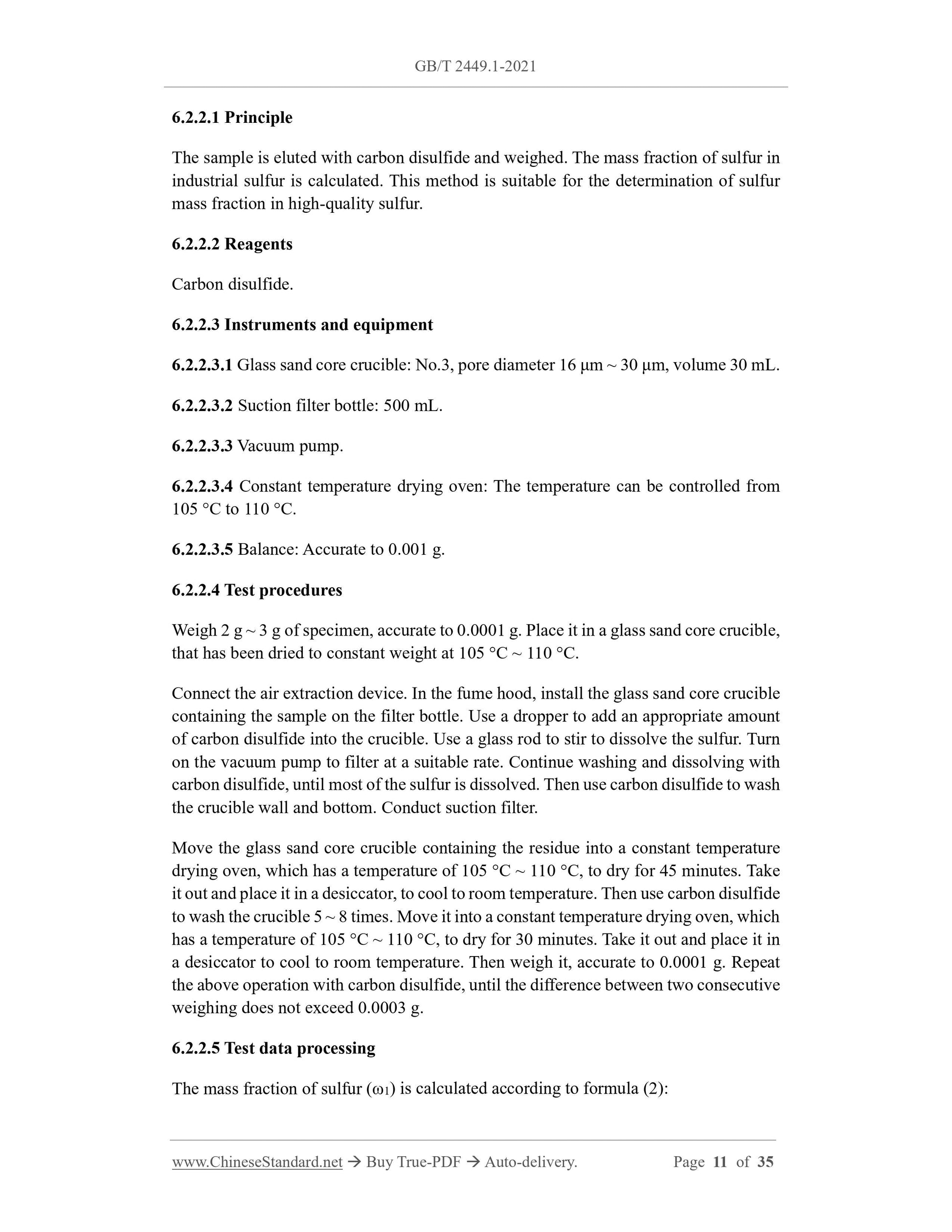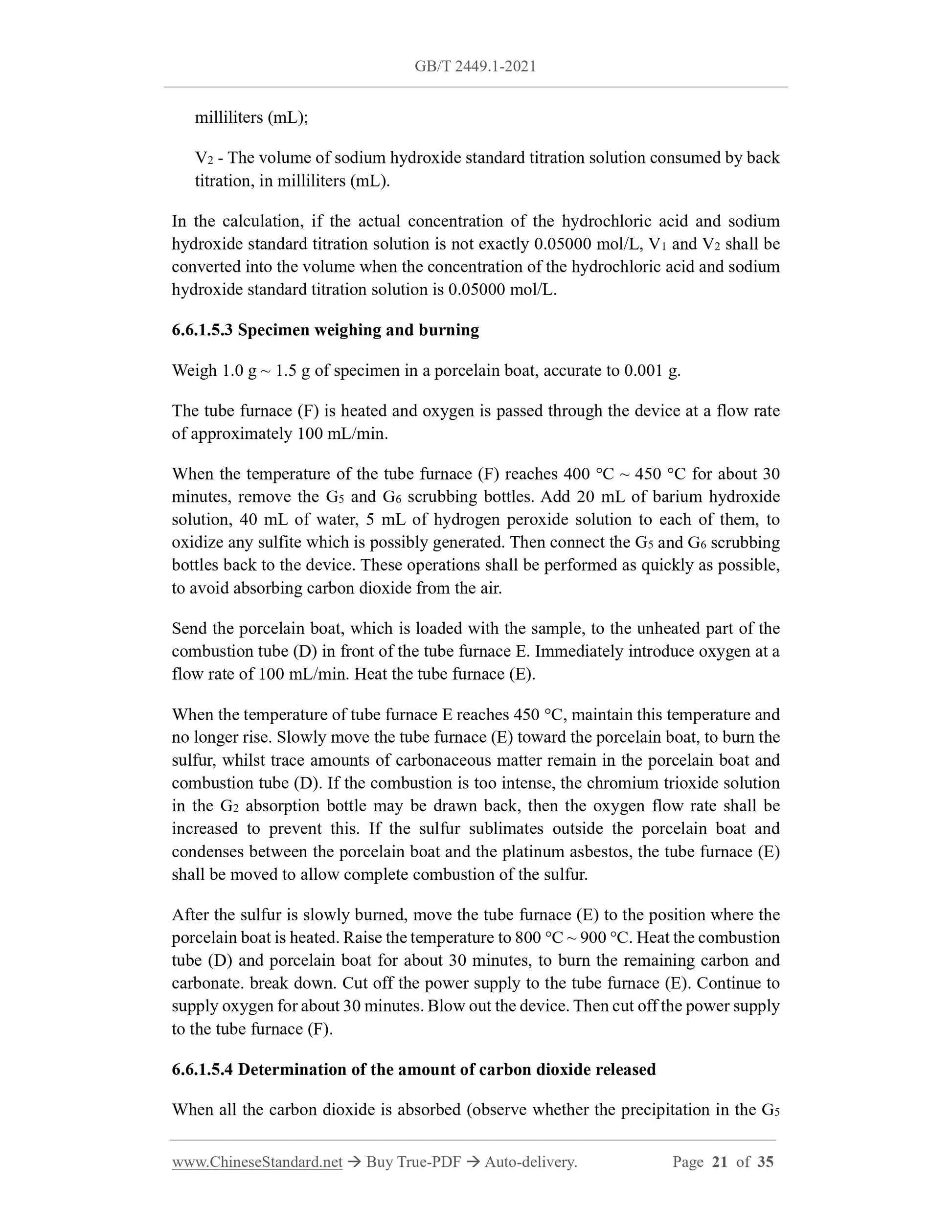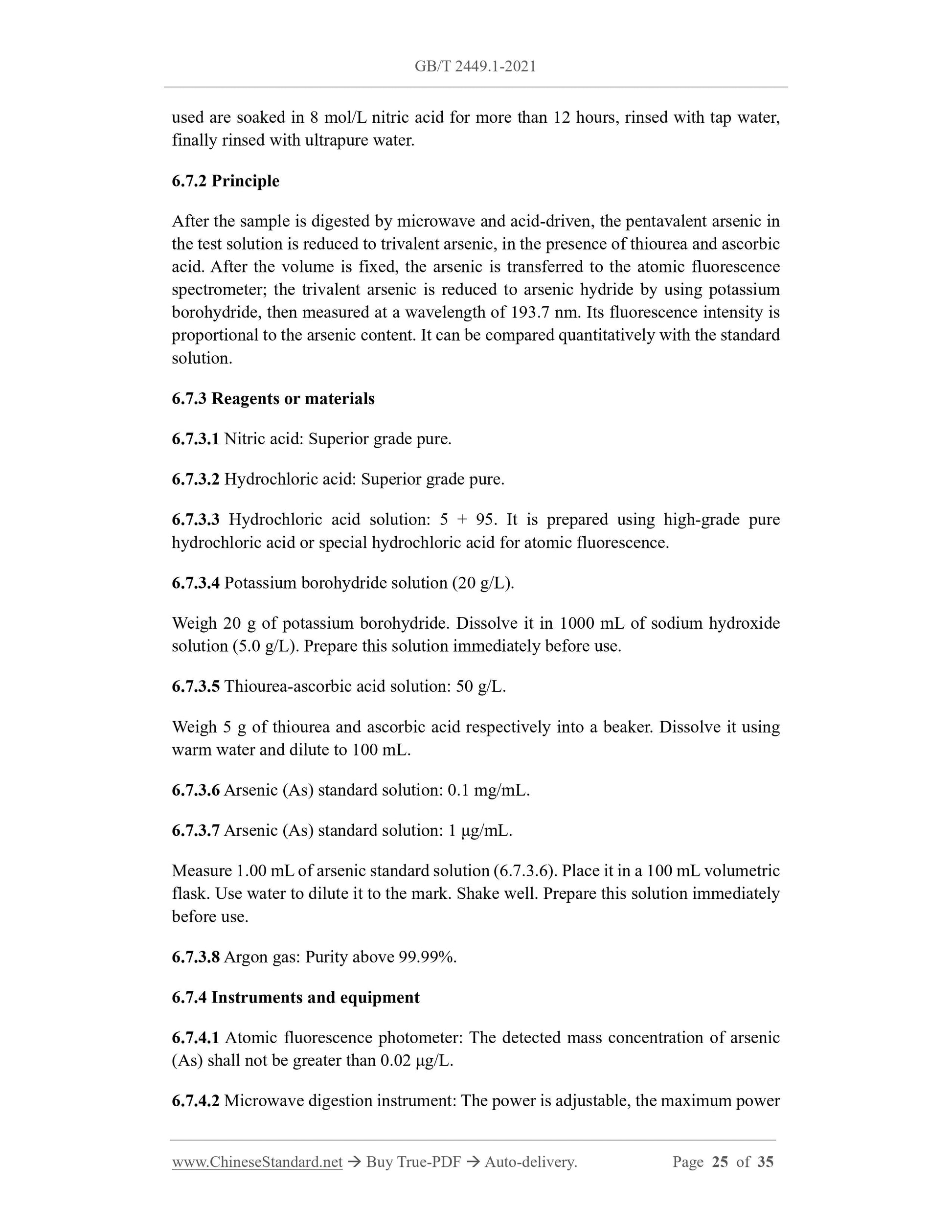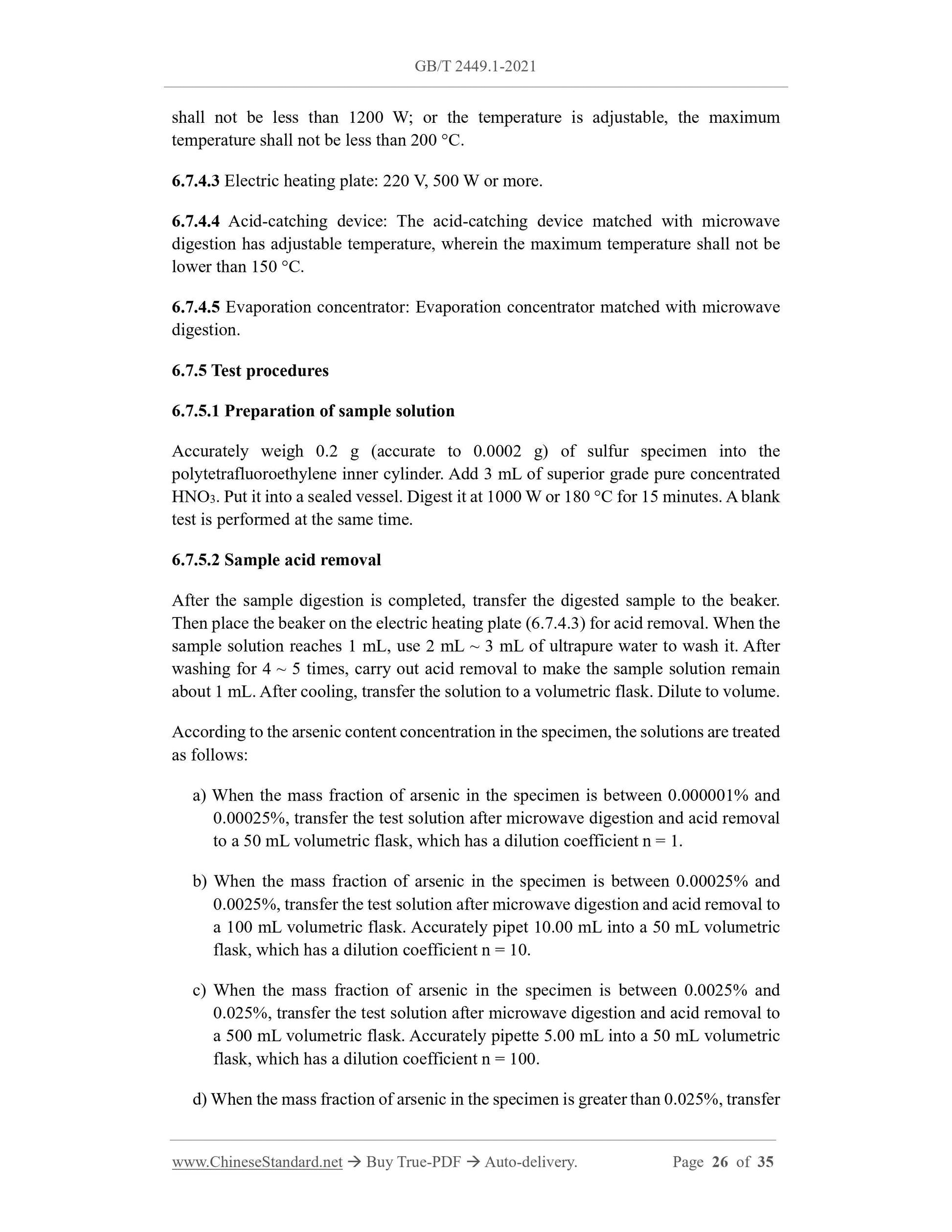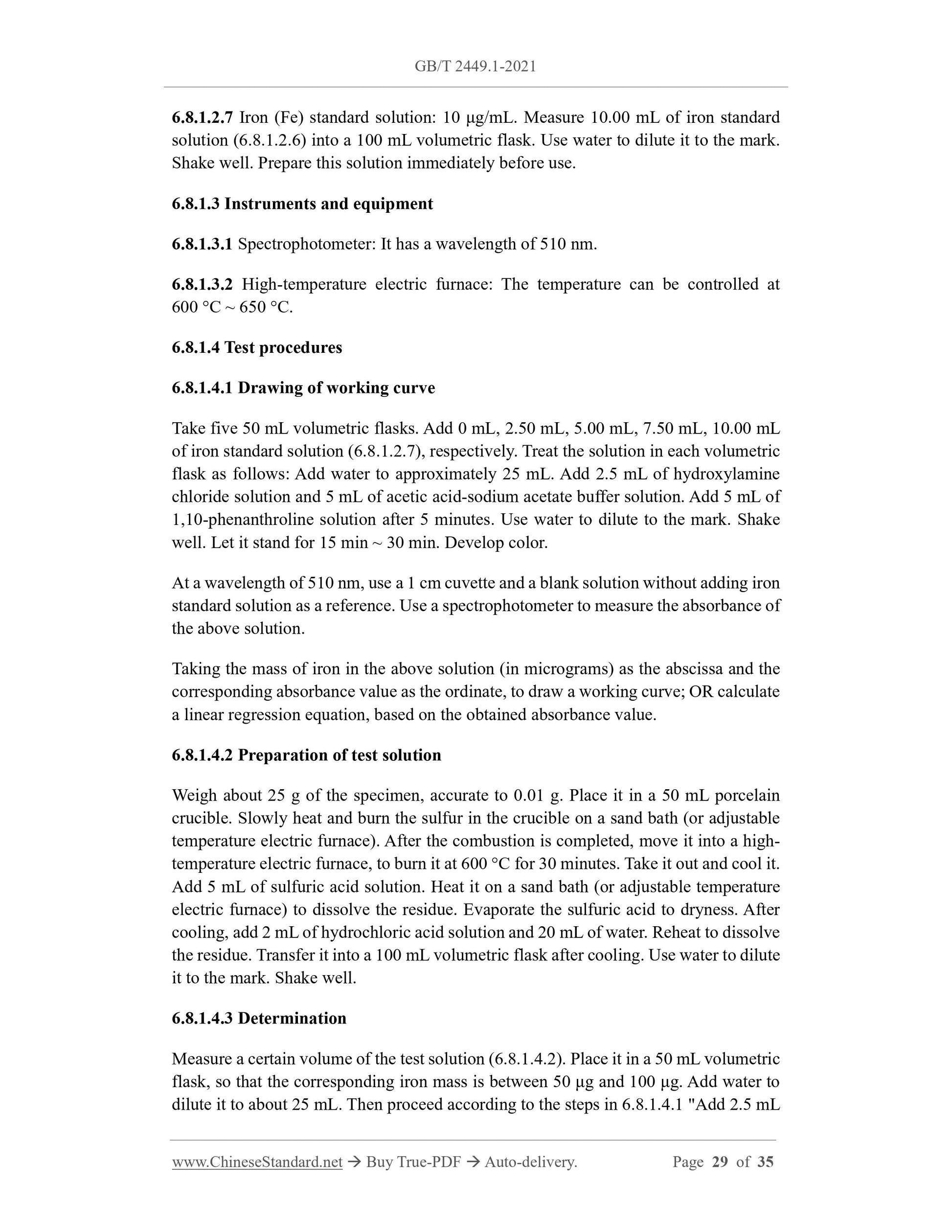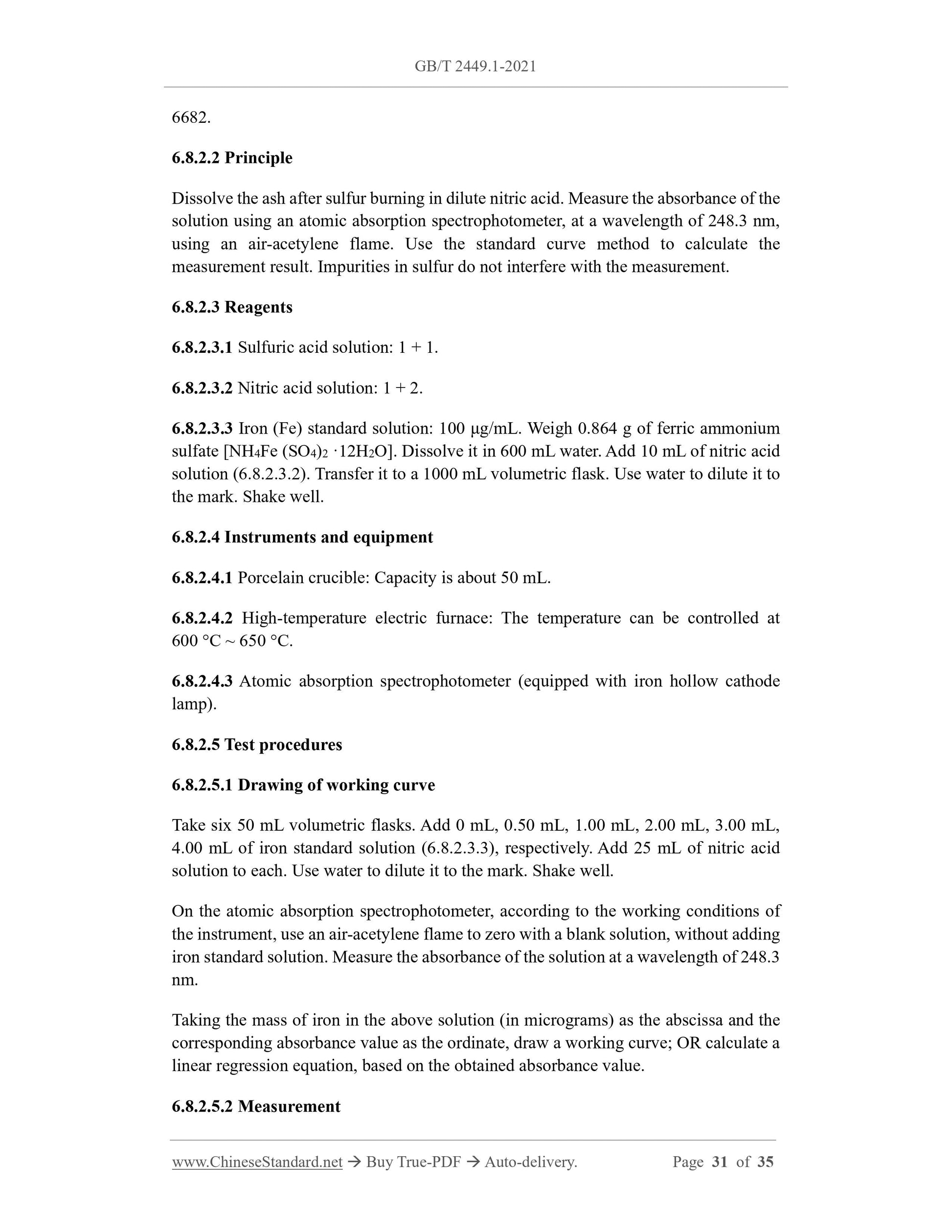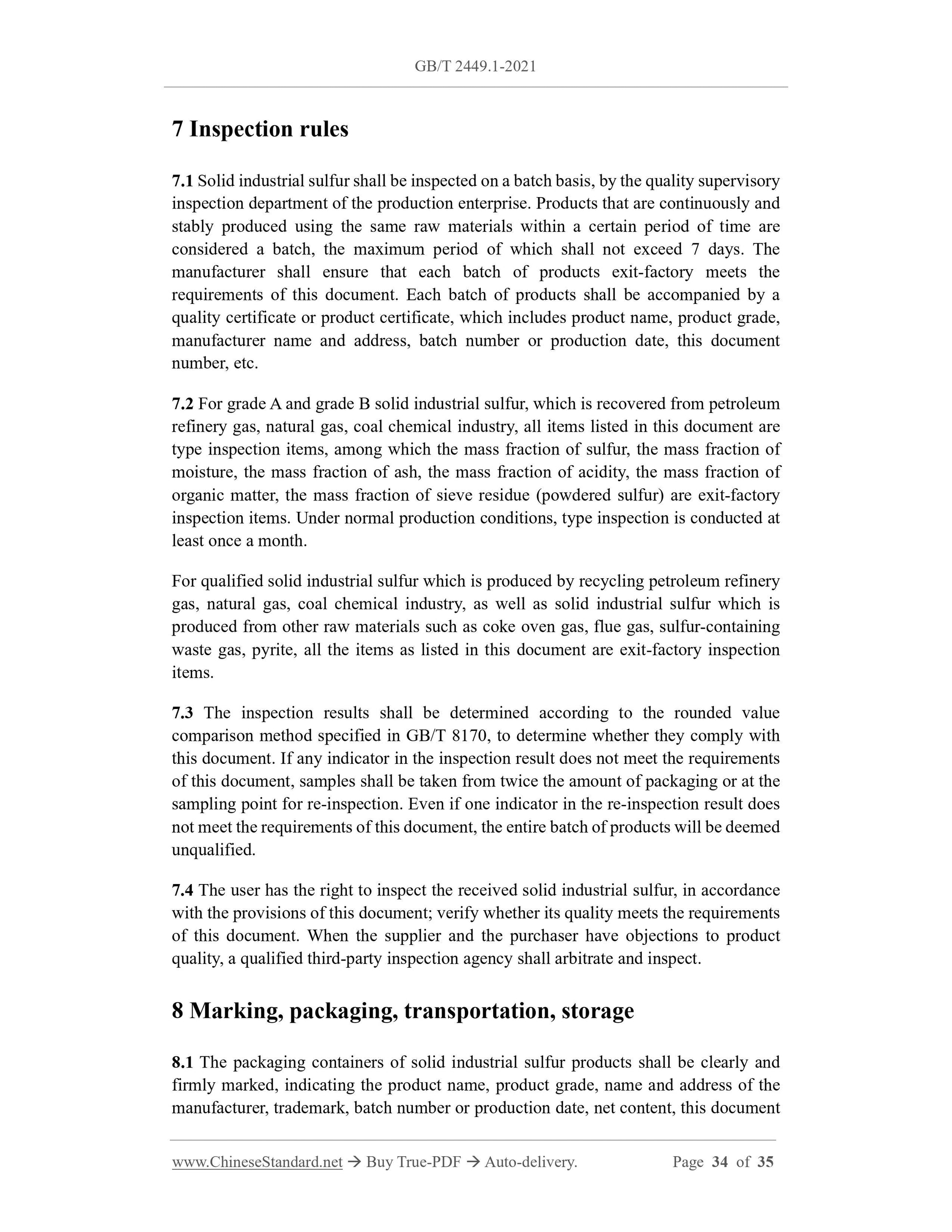1
/
of
12
www.ChineseStandard.us -- Field Test Asia Pte. Ltd.
GB/T 2449.1-2021 English PDF (GB/T2449.1-2021)
GB/T 2449.1-2021 English PDF (GB/T2449.1-2021)
Regular price
$390.00
Regular price
Sale price
$390.00
Unit price
/
per
Shipping calculated at checkout.
Couldn't load pickup availability
GB/T 2449.1-2021: Sulphur for industrial use - Part 1: Solid product
Delivery: 9 seconds. Download (and Email) true-PDF + Invoice.Get Quotation: Click GB/T 2449.1-2021 (Self-service in 1-minute)
Newer / historical versions: GB/T 2449.1-2021
Preview True-PDF
Scope
This document specifies the technical requirements, sampling, test methods, inspectionrules, marking, packaging, transportation, storage, safety of solid sulfur for industrial
use.
This document applies to solid industrial sulfur, which is produced from petroleum
refinery gas, natural gas, coal chemical acid gas, coke oven gas, flue gas, sulfur waste
gas recovery, pyrite.
Basic Data
| Standard ID | GB/T 2449.1-2021 (GB/T2449.1-2021) |
| Description (Translated English) | Sulphur for industrial use - Part 1: Solid product |
| Sector / Industry | National Standard (Recommended) |
| Classification of Chinese Standard | G13 |
| Word Count Estimation | 23,220 |
| Issuing agency(ies) | State Administration for Market Regulation, China National Standardization Administration |
Share
